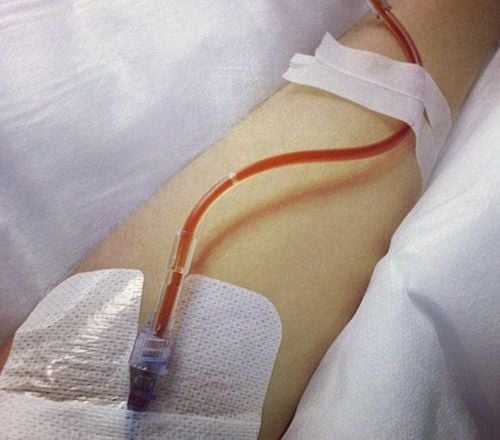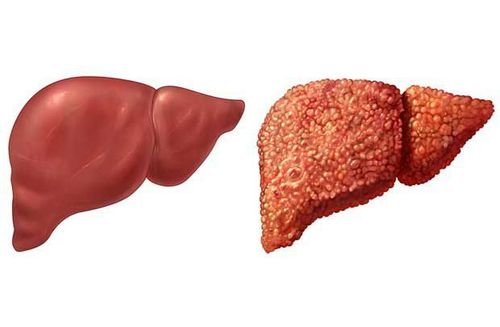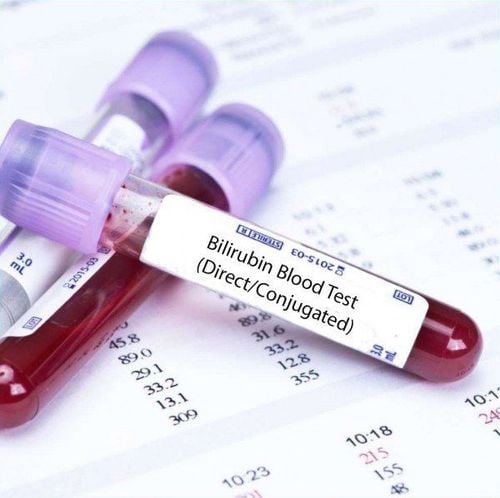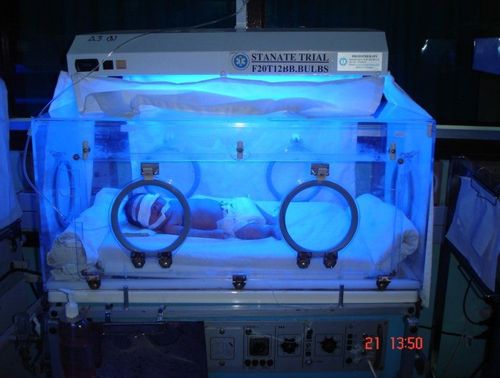This is an automatically translated article.
The article was professionally consulted by an eye doctor - Department of Examination & Internal Medicine - Vinmec Hai Phong International General HospitalYellow eyes are a clear sign of health problems. So when yellow eyes appear, what should be paid attention to?
1. What is yellow eye?
The white part (sclera) of the eye turns yellow when a condition called jaundice occurs. Jaundice (jaundice) is a common physiological phenomenon in newborns, however, whether children or adults, it is possible to appear jaundice.The sclera is yellow when the body has an excess of an active substance called bilirubin. Bilirubin is a yellow substance that is formed after red blood cells are destroyed. Bilirubin is a component in the blood, if it does not exceed the threshold, there will be no abnormality. Bilirubin is conjugated in the liver, it is also a component of bile - an indispensable digestive juice. If bilirubin levels rise in the blood too much, or for some reason the liver's metabolic response is not enough, it accumulates and causes jaundice, which turns the eyes yellow.
Trắc nghiệm: Bài kiểm tra chỉ số trí tuệ cảm xúc (EQ) của bạn
Chỉ số trí tuệ cảm xúc Emotional Quotient (EQ) là một chỉ số dùng để nói lên trí tưởng tượng, đánh giá và cảm xúc của một con người. Hãy làm bài trắc nghiệm sau để biết chỉ số EQ của bạn là bao nhiêu?
Nguồn tham khảo: webmd.com
2. Common causes of eyes turning yellow
2.1 Hepatitis The liver can become inflamed due to many different causes, the most common of which is viral hepatitis. The most common types of hepatitis viruses are the hepatitis A, B, and C viruses. Viral hepatitis can be acute or chronic (that is, inflammation that lasts for at least 6 months).Hepatitis causes liver damage, affecting the liver's ability to handle bilirubin, eventually leading to jaundice. In addition to microbial causes of hepatitis, the liver can also become inflamed due to certain medications or autoimmune diseases.
2.2 Gallstones Gallstones can appear in the gallbladder or in the bile ducts. Gallstones are the most common cause of biliary obstruction. When present in the bile ducts, gallstones can completely or partially block the passage of bile from the liver to the gallbladder as well as to the duodenum, and in that case, bilirubin levels are elevated. in the blood and causes jaundice, which turns the eyes yellow.
2.3 Drinking too much alcohol If you are a heavy drinker for a long time (minimum 8 to 10 years), your liver will be severely damaged. In some people, inflammation and destruction of liver cells can occur, over time, scar tissue forms to replace healthy liver tissue that has been destroyed, severely affecting function. of the liver.
2.4 Certain medications Some treatments that have been linked to jaundice include:
Acetaminophen (if too much is used) Penicillins (such as amoxicillin/clavulanate) Contraceptives Chlorpromazine (medicine used during pregnancy) treatment of certain mental and emotional disorders) Steroids.

Humans can become infected with liver flukes through eating raw or undercooked infected fish and plants. Some other parasites can also get into the bile ducts and cause bile obstruction, such as roundworms.
2.6 Common bile duct diseases Gallstones are the most common cause of common bile duct disease, however there are some other rare causes of jaundice, such as:
Congenital biliary atresia : Causes bile cannot flow, is a congenital disease. Primary biliary cholangitis: The biliary tract is destroyed over time. Primary sclerosing cholangitis: Causes the bile ducts to appear scarred. 2.7 Reactions to Blood Transfusion If the transfusion is not appropriate, it will lead to the occurrence of immune reactions to destroy the newly transferred red blood cells, releasing bilirubin causing jaundice. However, jaundice is not the only problem with inappropriate blood type transfusions, because many other serious life-threatening reactions occur. Thanks to the safety of blood transfusions, transfusions of inappropriate blood types are now very rare.

2.9 Cirrhosis Cirrhosis is a condition in which scar tissue replaces healthy liver tissue. Cirrhosis occurs slowly over a long period of time, and there are many different conditions and diseases that cause cirrhosis, the most common are:
Alcohol abuse for many years Obesity, creating conditions for the appearance of diseases Causes cirrhosis Hepatitis B virus and chronic hepatitis C virus The more severe the cirrhosis, the lower the functional functioning of the liver.

2.11 Hemolytic anemia In hemolytic anemia, red blood cells are destroyed too quickly, releasing too much bilirubin that the liver can't process. Hemolytic anemia can be congenital, but can also occur after infection, autoimmune disease, and a number of other situations.
2.12 Liver Cancer : Liver cancer causes damage to liver cells or bile ducts, affecting liver function and thus causing jaundice. Pancreatic cancer: Tumors in the pancreas can put pressure on the bile ducts, obstructing the bile ducts and thus causing jaundice. Gallbladder cancer: This is a rare cancer that progresses silently until the tumor is large enough to cause symptoms. When the tumor compresses the biliary tree causing biliary obstruction, jaundice will appear.

Please dial HOTLINE for more information or register for an appointment HERE. Download MyVinmec app to make appointments faster and to manage your bookings easily.
Article reference source: webmd.com












